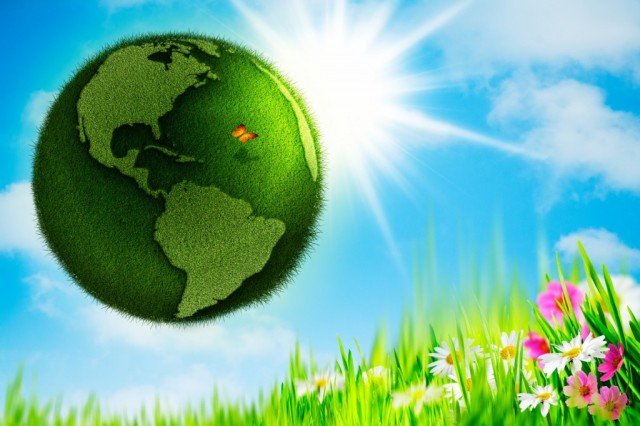Earth Day 2014: History and facts
Earth Day is celebrated annually on April 22 with worldwide events to demonstrate support for environmental protection.
It was first celebrated in 1970, and is now coordinated globally by the Earth Day Network, and celebrated in more than 192 countries each year.
A major catalyst for Earth Day was the New York Times best-seller Silent Spring, published in 1962 by marine biologist and conservationist Rachel Carson. Prior to Silent Spring, environmental issues – and their effect on our health – weren’t on the public’s radar. The book went on to sell more than 500,000 copies in 24 countries and has been heralded as the “watershed moment for the modern environmental movement”.
Gaylord Nelson, a US Senator from Wisconsin, came up with the idea of Earth Day after witnessing the massive 1969 oil spill in Santa Barbara, California. Gaylord Nelson modeled his idea for an environmental movement after the student anti-war demonstrations across the country, realizing that if the public became passionate about the issues and banded together to demand change, the government would eventually listen.
The date Gaylord Nelson chose for Earth Day – April 22 – was a strategic scheduling move. Since he realized college students would be the majority – and the most passionate – of the participants, Gaylord Nelson decided the date was ideal for most college schedules, falling midway between spring break and final exams.

Earth Day is celebrated annually on April 22 with worldwide events to demonstrate support for environmental protection
After recruiting conservation-minded Republican Congressman Pete McCloskey to serve as his co-chair, Gaylord Nelson presented his Earth Day idea to the media, calling it a “national teach-in on the environment”. His team promoted events nationwide. As a result, 20 million Americans attended coast-to-coast rallies, calling for a healthy, sustainable environment on April 22, 1970.
Gaylord Nelson’s theory that Earth Day would get the government to listen proved correct. The event not only led to the creation of the United States Environmental Protection Agency but also to the passage of the Clean Air, Clean Water and Endangered Species Acts. Talk about accomplishing a lot in one day.
While Earth Day is most often associated with April 22, there are technically two celebration dates.
John McConnell, a newspaper publisher and community activist, suggested an annual observance of our shared responsibility to care for the Earth that would coincide with the Vernal Equinox. In 1971, the United Nations signed a declaration establishing February 26 as the International Earth Day. The ringing of the UN Peace Bell at the UN headquarters in New York City continues to commemorate International Earth Day every year on the first day of spring.
In honor of Earth Day’s 20th Anniversary on April 22, 1990, the movement sought to boost its outreach goals. The day was celebrated globally rather than only in the U.S., and focused on increasing worldwide recycling initiatives. Earth Day’s global presence soon prompted the United Nations Earth Summit, held in 1992 – the first gathering of world leaders to create a global plan for sustainable development.
To mark Earth Day’s 25th anniversary, President Bill Clinton awarded Senator Gaylord Nelson the Presidential Medal of Freedom – the highest honor given to US civilians.
Gaylord Nelson shared his reflections on the past 25 years, saying: “There has been a sea change in the degree of environmentally educated people in our society. They, in the end, will make the difference.”
With the new millennium came a renewed energy for Earth Day. The 30th anniversary was dedicated to raising awareness about clean energy, with activities that ranged from a traveling drum chain in Gabon, Africa, to hundreds of thousands gathering at the National Mall in Washington, D.C.
According to the Earth Day Network, 1 billion people participate in Earth Day events, making it the largest secular civic event in the world. This year’s theme, Green Cities, is inspired by the trend of the world’s population moves into cities. It is intended to motivate the public and city-planning officials to create and further support sustainable urban projects.
Other holidays include food traditions, why shouldn’t Earth Day have a celebratory meal too? In 2003, Earth Dinner was created as an opportunity to gather ’round the table with family and friends on Earth Day for a healthy meal (think local, organic and seasonal) and some talk about ways to reduce, reuse, recycle and conserve.
Celebrating Earth Day can be as simple as carpooling to work for the day or maybe just sporting the official 2014 Earth Day Tee.
A good resource to help you decide on an Earth Day task: A Billion Acts of Green.
[youtube K64Z569uFOg 650]
[youtube Omm2s9_Mlc4 650]
